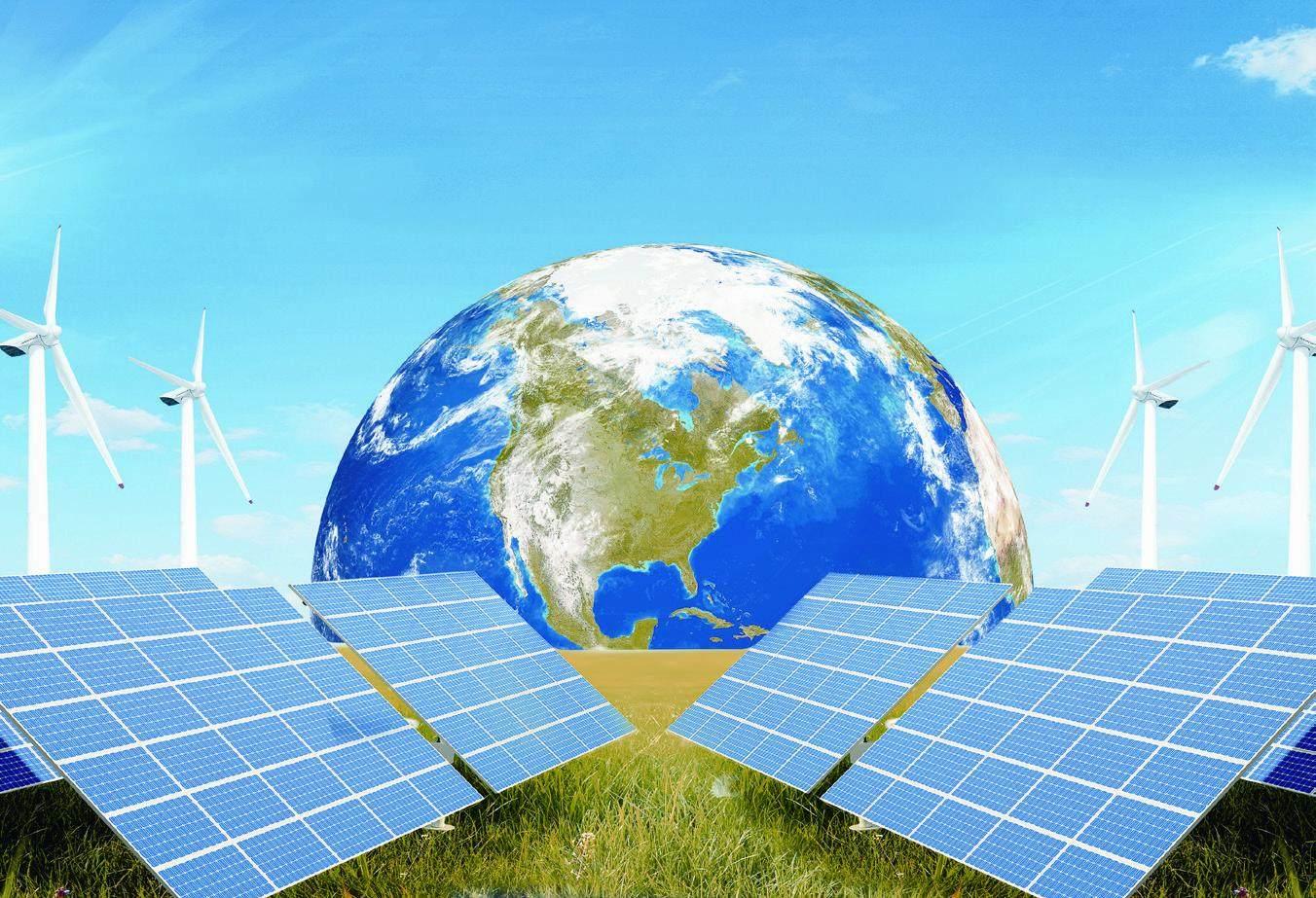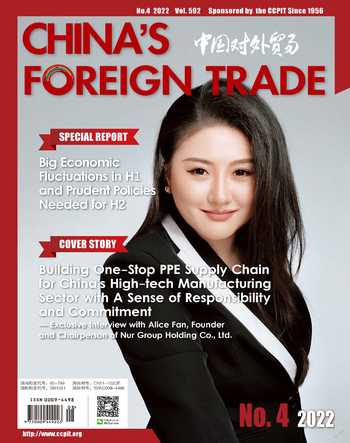China’s PV Industry Makes Breakthroughs Overseas
By Joyce Lee

The trade barrier, rising tariffs and disputes about intellectual property rights show the complex foreign trade situations faced by China PV enterprises when going overseas.
In the f irst half of 2022, against a backdrop of the carbon peak and neutralization, as well as the acceleration of the application of clean energy worldwide, Chinas PV industry has achieved rapid growth. According to corporate announcements and the industry associations estimates, Chinas PV industry chain has maintained strong growth, with a year-on-year increase of more than 45%. In terms of polysilicon, the total production reached 365 thousand mt for the first half year, up by 53.4%. In terms of the silicon pellets, the total output reached 153.8 GW, up by 45.5%. In terms of batteries, the production of crystalline silicon batteries reached 135.5 GW, up by 46.6%. In terms of PV modules, the output of crystalline silicon modules reached 123.6 GW for the first half year, up by 54.1%. The demands for the international PV market remained strong, with both quantity and price rising. During the first half year, the export of PV modules reached 78.6 GW, up by 74.3%, and the value of PV product export amounted to USD 25.9 billion, up by 113.1%.
The rapid growth of Chinas PV industry in the overseas market is accompanied by trade conflicts against Chinas PV enterprises. How to survive these trade conflicts and make sound development is a key concern for PV enterprises.
Flagship PV enterprises frequently involved in lawsuits
On July 28, Trinasolar and Jinko Solar, two big PV module producers in China, announced new issues that they are mired in.
Because of the sudden change in foreign trade policy, Trinasolars subsidiary company in the U.S. had to renegotiate the delivery conditions with Total Energies. However, the two have yet to reach a new deal. Trinasolar U.S. has been accused by Total of violating contracts and committing fraud.
Jinko Solar received the arbitration application from Sterling and Wilson International FZE (SW FZE) about the disputes over module supply contracts, and the application has been received by the International Chamber of Commerce International Court of Arbitration. SW FZE asked for the ruling that Jinko Solar should bear the cost of compensation for liquidated damages, involving a total amount of approximately USD 326 million.
Trinasolars branch company in the U.S. has also been involved in a lawsuit filed by Total Energy, with the total compensation for losses of approximately USD 200 million.
The case involving Trinasolar has attracted wide attention across the industry. Trinasolar said in its public announcement that,“because of the anti-circumvention investigation launched by the U.S. Ministry of Commerce and the National Security Bureau and the sudden change in WRO policies, the conditions and background of the signing of the original agreement have changed deeply, causing both sides to renegotiate the details of delivery, and no new agreement has been reached.”
The WRO policy mentioned in the announcement is known as a withhold and release order, is executed by the CBP (U.S. Customs and Border Protection) and aims to prohibit the importation of PV modules which are determined to have been manufactured by the use of forced labor. According to information on the CBP website, after the goods are detained by WRO, exporters (stakeholders) can submit information to CBP demonstrating that the imports do not violate the WRO and ask to withdraw the WRO.
Regarding the lawsuit, Trinasolar explained in its announcement that it has hired a professional legal team to respond to the lawsuit. It said, “the accusations from Total Energy are in many aspects inconsistent with the true facts.”
Furthermore, Trinasolar said,“this lawsuit case will not affect the normal operation and production of the company. It is estimated that the arbitration process may take more than 3 years. Before the final arbitration result comes out, Trinasolar will not be asked to repay any type of economic losses.”
In June 2021, the CBP issued an WRO against Hoshine Silicon, prohibiting the import of silicon products from Hoshine Silicon and PV products manufactured using the silicon materials produced by Hoshine Silicon and its branch companies.
In August last year, solar modules from a number of Chinese photovoltaic manufacturers such as Jinke Solar, CSIQ. US and Trinasolar were successively detained; at the end of October, U.S. Customs had detained a total of 40.31 mw of solar module products being exported to the United States by Longji Green Energy and its U.S. subsidiaries in accordance with the WRO.
This will inevitably increase the export cost of flagship enterprises. For example, Zhong Baoshen, Chairman of Longji Green Energy, mentioned at the companys performance presentation meeting in April this year that: “the WRO policy has posed great challenges for the company in Q4 last year and Q1 of this year, as the processing time is very timeconsuming. The demurrage and storage fees in these two quarters amounted to more than RMB 300 million.”
In addition, as the Chinese PV enterprises encountered further issues due to changes in foreign trade policy, they are also facing another issue, i.e. that many of them have been involved in patent disputes many times.
In March and April 2019, Hanwha Group of South Korea filed patent infringement lawsuits with the U.S. International Trade Commission, the U.S. District Court of Delaware, the federal court of Australia and the courts of many other countries, holding that some products sold by Longji Green Energy and its subsidiaries in the above regions infringed on Hanwhas patent rights. It wasnt until this year, when the United States Court of Appeals for the Federal Circuit issued an appeal decision on the invalidation of Hanwhas US patent US 9893215 B2, and upheld the “invalid ruling” of the U.S. Patent and Trademark Office (USPTO), that the patent litigation dispute between Longji Green Energy and Hanwha in the United States came to an end.
In June this year, Canadian Solar announced that it had reached a settlement with module producer Solaria regarding the patent dispute over “shingled” solar modules. However, Canadian Solar also paid the price of being unable to sell its singled solar modules in the U.S. market for seven years.
At a recent mid-year meeting of the PV industry, Wang Bohua, Honorary Chairman of the China Photovoltaic Industry Association, said that the consequences of the patent dispute is the direct loss of a specific PV market, which has a greater impact than trade barriers and tariffs. Enterprises need to manage their intellectual property rights well and carry out work in advance.
Respond to foreign trade risks actively
In fact, after some of its modules were detained by U.S. Customs according to the WRO at the end of October last year, Longji announced that from the second half of 2020, the company had established and improved management measures for dealing with the WRO, including product traceability and system construction, external agency certification, supplier management and other corresponding measures.
In response to the business disputes caused by the anti-circumvention investigation and WRO policy, Trinasolar said that in the future, the company will take multiple measures to actively deal with the risks brought about by overseas trade frictions.
“On the one hand, we will leverage the advanced IT technology to undertake the tracing work and save the evidence of bills and documents to prepare for the WTO review. On the other hand, we have allocated production capacities across the world and will make adjustments to regional strategies to avoid heavy dependence on a single market and control the overseas risks,” explained a representative of Trinasolar.
In the face of increasingly complex legal risks, he suggested, “both enterprises and governments need to plan in advance and combine public and private legal measures including due diligence, contracts, foreign trade, investment and finance to secure the cross-border transactions of Chinese enterprises. The training of foreignrelated legal talents needs to focus on real practices through improvements in teaching content and training modes. It is also important to pay attention to common law and be more comprehensive and extroverted in terms of our knowledge structure.”
- China’s foreign Trade的其它文章
- Zero Tolerance for Bad Faith Trademarks By Chinese Authorities
- Focus on Seven Aspects of the Amendments to the Anti-Monopoly Law
- Off-shore Duty-free Consumption in Hainan Surges
- New Infrastructure Construction Promotes the Stable Growth of the Chinese Economy
- China’s Automobile Exports Catch Up from Behind
- The Logistics Industry Turns Positive

